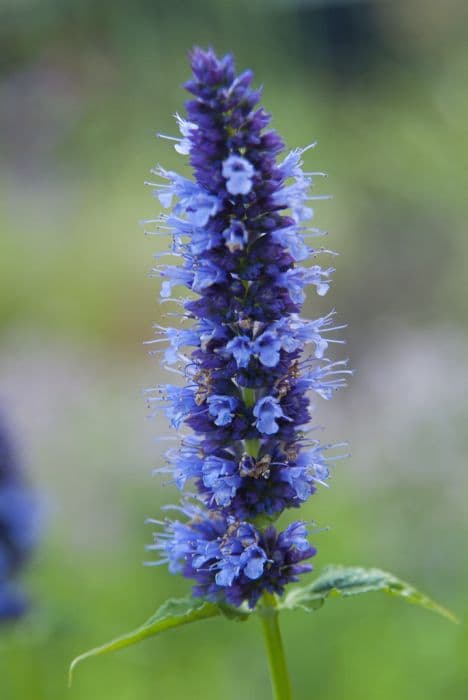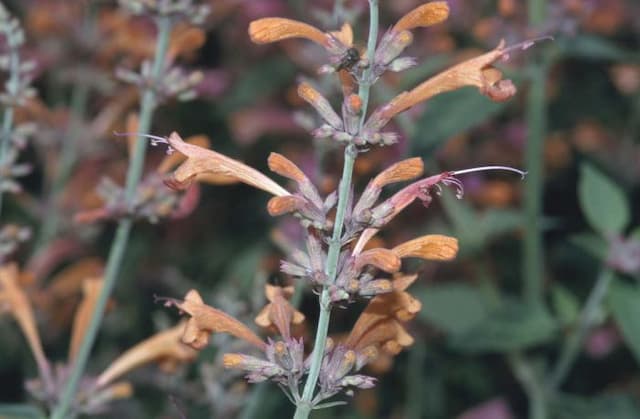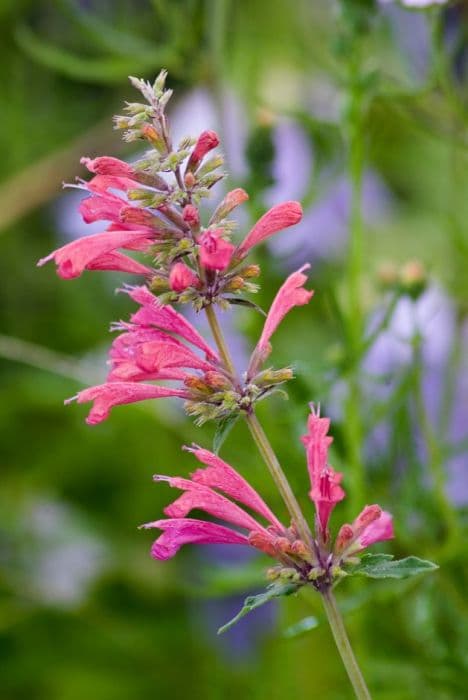Lemon thyme Thymus 'Culinary Lemon'

ABOUT
A mat-forming, lemon-scented evergreen perennial with mid green leaves and pale purple-pink flowers appearing in spring and summer
About this plant
 Names
NamesFamily
Lamiaceae
Synonyms
Lemon Thyme, Culinary Lemon Thyme
Common names
Thymus 'Culinary Lemon'.
 Characteristics
CharacteristicsLife cycle
Perennials
Foliage type
Evergreen
Color of leaves
Green
Flower color
Pink
Height
6 to 12 inches (15 to 30 cm)
Spread
1 to 2 feet (30 to 60 cm)
Plant type
Herb
Hardiness zones
5-8
Native area
Mediterranean
Benefits
 General Benefits
General Benefits- Aromatic qualities: The lemon thyme plant gives off a pleasant citrus fragrance that can enhance the ambience of gardens and outdoor spaces.
- Culinary uses: The leaves of lemon thyme are commonly used to flavor a variety of dishes, including meats, soups, and sauces, due to their lemony taste.
- Attracting pollinators: Lemon thyme flowers can attract bees, butterflies, and other beneficial pollinators to the garden, supporting biodiversity.
- Low maintenance: Lemon thyme is a hardy plant that requires minimal care, making it suitable for gardeners of all skill levels.
- Drought tolerance: Once established, the plant is quite drought-tolerant, reducing the need for frequent watering.
- Ground cover: With its dense growth habit, lemon thyme can be used as an effective ground cover to reduce soil erosion and suppress weeds.
- Decorative use: The small purple or pink flowers and compact growth habit make lemon thyme a visually appealing addition to any garden or pot.
 Medical Properties
Medical Properties- Antimicrobial: Lemon Thyme contains compounds that may have antibacterial and antifungal properties.
- Antioxidant: It may provide antioxidants, which help protect the body against oxidative stress and may contribute to overall health.
- Antispasmodic: Traditionally used for its potential to relieve spasms in the digestive tract.
- Expectorant: May aid in clearing mucus from the respiratory tract.
- Carminative: Could help reduce gas and bloating in the digestive system.
- Anxiolytic: Some components in Lemon Thyme might have a calming effect and potentially reduce anxiety.
 Air-purifying Qualities
Air-purifying QualitiesThis plant is not specifically known for air purifying qualities.
 Other Uses
Other Uses- As an aromatic sachet - Dried leaves of lemon thyme can be put into small pouches and placed in drawers or closets to impart a fresh, lemony fragrance to linens and clothing.
- In baths and soaks - Fresh or dried leaves can be added to bathwater for a fragrant and refreshing bathing experience.
- As a natural polish - The essential oils in lemon thyme can be used to polish wooden furniture, leaving behind a clean scent and shine.
- In potpourri mixes - Lemon thyme can be included in potpourri blends for a citrusy, fresh aroma in the home.
- As a moth repellent - The strong scent of lemon thyme is said to repel moths, making it useful in wardrobes and storage boxes to protect clothing.
- In aromatherapy - The essential oil of lemon thyme can be diffused to create an uplifting and stress-relieving atmosphere.
- As a natural cleaner - Infused in vinegar, lemon thyme creates a natural cleaning solution that can be used on various surfaces for its disinfectant properties.
- As a flavor enhancer - Lemon thyme can be added to homemade vinegars or oils to infuse them with a unique citrusy flavor that can be used in culinary creations.
- For crafting - The small, attractive leaves and stems can be used in wreath-making or as decorative touches in various craft projects.
- In insect-repelling candles - The essential oil of lemon thyme can be added to homemade candles to help fend off insects when used outdoors.
Interesting Facts
 Feng Shui
Feng ShuiLemon Thyme is not used in Feng Shui practice.
 Zodiac Sign Compitability
Zodiac Sign CompitabilityLemon Thyme is not used in astrology practice.
 Plant Symbolism
Plant Symbolism- Courage and Bravery: Throughout history, thyme has been associated with courage. Roman soldiers exchanged sprigs of thyme as a sign of respect and to bestow bravery. Similarly, in the Middle Ages, knights would wear thyme as a symbol of courage in battle.
- Healing and Health: Thymus, or thyme, is renowned for its medicinal properties and has been used as a natural remedy for a range of health issues, symbolizing healing and the promotion of good health.
- Cleansing: With its antiseptic and purifying qualities, thyme is often used for cleansing and fumigating spaces, representing physical, spiritual, or emotional purification.
- Passing of Time: Thyme can also represent the passage of time, possibly due to its long-lasting fragrance and perennial nature, reminding us of the enduring and ever-present moment.
- Peace and Tranquility: The aromatic qualities of Lemon Thyme, in particular, are believed to promote relaxation and peacefulness, making it a symbol of tranquility and a calming presence.
 Water
WaterLemon Thyme likes to be kept slightly moist but not waterlogged. Typically, you should water Lemon Thyme once every week or two, allowing the soil to dry slightly between waterings. When watering, soak the soil thoroughly until the excess water drains out from the bottom of the pot; this might be around one to two gallons depending on the size of the plant and the pot. During the hotter seasons, check the soil moisture frequently, as you might need to water more often. However, in the winter, reduce watering to every two to three weeks as the plant's water requirements decrease.
 Light
LightLemon Thyme thrives best in full sunlight, which means it should be placed in a spot where it can receive at least 6 hours of direct sunlight every day. An ideal location would be a south-facing window if grown indoors or a sunny, open spot in the garden. It can tolerate some light shade, but too much shade will result in a less dense plant with fewer flowers and weaker flavor.
 Temperature
TemperatureLemon Thyme prefers moderate temperatures and can survive in temperatures as low as 20 degrees Fahrenheit, but it is not frost-tolerant. The ideal growing temperature for Lemon Thyme is between 60 and 70 degrees Fahrenheit. It can withstand higher temperatures, especially when it's well-watered, but it is best to protect the plant from extreme heat by providing partial afternoon shade or moving it to a cooler spot.
 Pruning
PruningPruning Lemon Thyme is essential to encourage bushier growth and to prevent the plant from becoming woody. It's best to prune in the spring after the last frost or in the early summer after the plant has flowered. Cut back the plant by about one-third, removing any dead or woody stems in the process. Regular trimming and harvesting of the tips can also help maintain a compact shape and can be done throughout the growing season as needed.
 Cleaning
CleaningAs needed
 Soil
SoilLemon Thyme thrives in well-draining soil with a slightly alkaline pH between 6.5 and 7.0. A mix of two parts potting soil to one part coarse sand or perlite, with a handful of peat to increase the pH, works well.
 Repotting
RepottingLemon Thyme should be repotted every 2 to 3 years to refresh the soil and alleviate root crowding. It's best to repot in the spring before new growth starts.
 Humidity & Misting
Humidity & MistingLemon Thyme prefers a dryer environment with low to moderate humidity. High humidity levels can lead to fungal issues, so it thrives best in average household humidity conditions around 30-50%.
 Suitable locations
Suitable locationsIndoor
Place Lemon Thyme in a sunny window, water when soil is dry.
Outdoor
Full sun, well-draining soil; protect from severe frost.
Hardiness zone
Lemon Thyme is suitable for USDA zones 5-9.
 Life cycle
Life cycleThymus 'Culinary Lemon', commonly known as Lemon Thyme, begins its life as a seed, which upon germination, typically in early spring, produces small seedlings with characteristic thyme-shaped leaves. The plant enters a vegetative growth phase, during which it develops a woody base and sprawling stems with leaves that emit a lemon scent when bruised. Lemon Thyme reaches maturity in the late spring to early summer, when it blooms with small purple or white flowers that attract pollinators such as bees. Following pollination, the plant may produce small, dry seed capsules from which seeds are dispersed for the next generation. Throughout its life, Lemon Thyme undergoes seasonal growth, with active periods in the spring and summer and dormancy in colder months. As a perennial herb, it can survive for several years, though it may become woody and less productive with age, at which point gardeners may propagate new plants through cuttings or division to continue the cycle.
 Propogation
PropogationPropogation time
Spring-Early Summer
Thymus 'Culinary Lemon', commonly known as Lemon Thyme, is best propagated during the growing season, which is spring to early summer. The most popular method of propagation for Lemon Thyme is by softwood cuttings. To propagate with this method, a gardener should select a healthy, non-flowering stem and cut a 4 to 6-inch (about 10 to 15 cm) length, making a cut just below a leaf node. The lower leaves are then removed, and the cutting is dipped in rooting hormone before being planted in a well-draining soil mix. The cutting should be kept in a warm, humid environment with indirect sunlight until roots develop, which can take several weeks. Consistent moisture is crucial, so the soil should not be allowed to dry out, but also avoid waterlogging which could cause the cutting to rot.






![Bugle [Sugar Plum]](/_next/image?url=https%3A%2F%2Fplants-admin.emdemapps.com%2Fimages%2Fplants%2F%2Fimages%2F604b597956a55.png&w=640&q=75)
![Bugle [Princess Nadia]](/_next/image?url=https%3A%2F%2Fplants-admin.emdemapps.com%2Fimages%2Fplants%2F%2Fimages%2F604b5806e268c.png&w=640&q=75)

